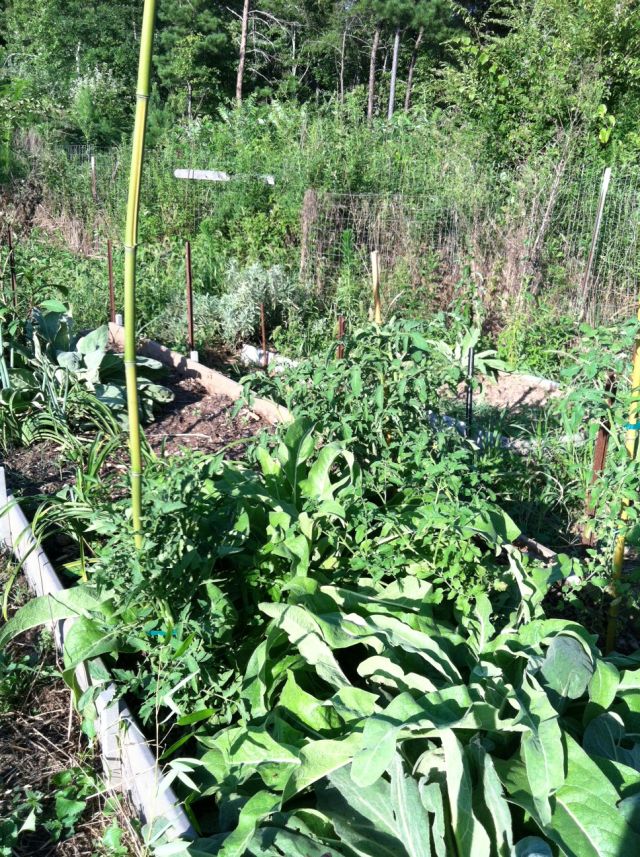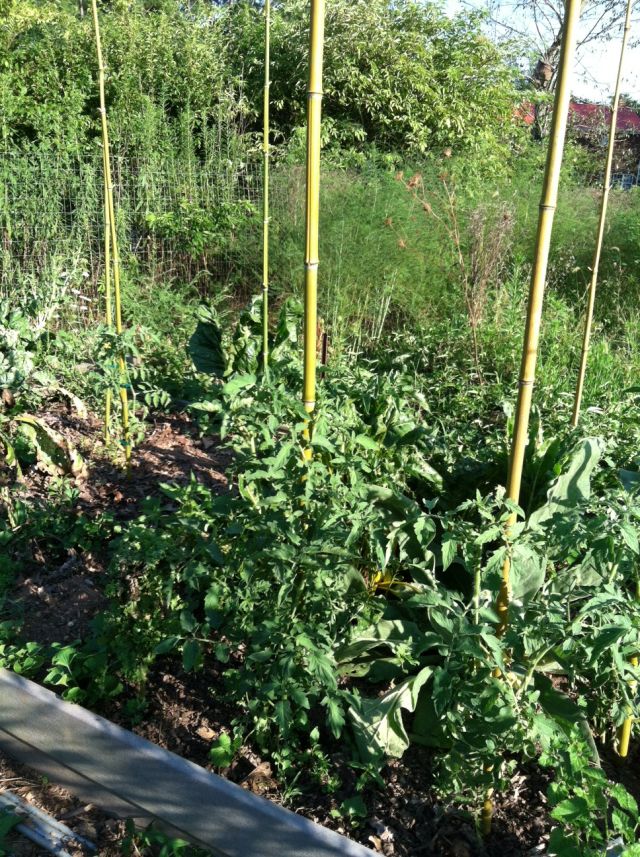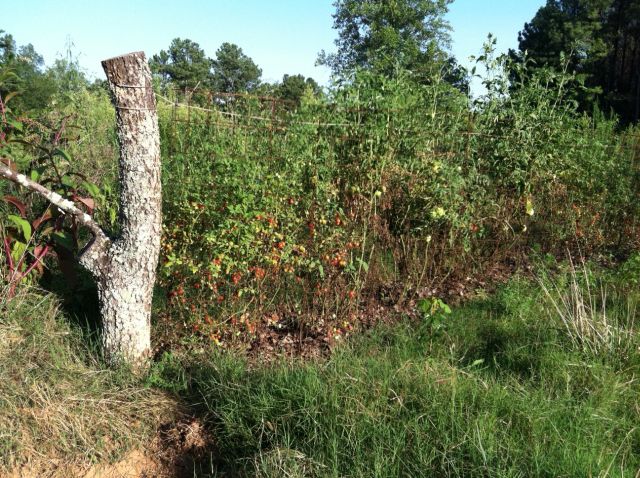My tomatoes plants bear well but usually by August they look bedraggled. The yellowing of the leaves which begins at the lower limbs progresses upwards and I am left with skeletal remains and a few lonely tomatoes. A few years ago I tried to extend the harvest by breaking my rule (all my vegetables are from my seed sowing) and buying several large healthy looking tomato plants. They did poorly. Perhaps they were nurtured on energetic synthetic fertilizers and could not acclimatize to my all natural compost environment?
Got me thinking. What if I kept some tomatoes plants in reserve and planted them out say 6 weeks later than the others. They were all seeded at the same time but the reserve force was footed in 2″ soil blocks and kept in the shade so they barely grew as a result of lack of sun and nutrition. My question was would they age and deteriorate at the same rate as their brethren in the field or would they be 6 weeks younger?
Today I looked at the later planted tomatoes and, unlike their siblings which have been bearing heavily and showing severe signs of wear and tear, they look young and strong and are bearing flowers – so it appears they are on their way.

But conclusions are difficult to draw – unlike a laboratory there are unconstrained variables – the later planted tomatoes are in raised beds which may have larger deposits of compost and less soil and less soil may mean less wilt, and for the first time I have planted out mullein and maybe the mullein, which accompanies the more recent batch, is helping as well. Finally, they have not yet borne tomatoes so I must reserve conclusions until August/September.

For most of my tomatoes I use wire cages cut from 5′ by 150′ lengths of remesh. But the later tomatoes were a bit of an afterthought and I had already deployed all the wire cages. Since I had a stand of gradually invasive bamboo I simply cut lengths of bamboo stakes and secured the plants to the stakes.

